-
Posts
144 -
Joined
-
Last visited
Content Type
Profiles
Forums
Events
Posts posted by Rijko
-
-
Oversimplified, but :
the older GS bikes had a separate rectifier and regulator, later (1980+) ones were combined R/R.
Both had the same disadvantage : simply put the stator has to deliver max capacity.
The power generated goes into the R/R, powers the bike, but with the battery fully charged the surplus has to go somewhere.
This surplus turns into heat and taxes the stator, regulator and rectifier heavily.
(the wiring loom with corroded connections everywhere and corrosion in handlebar switches etc make this issue even bigger))
Topping off the oil to max at least helps the stator get rid of some heat.
Driving with the 50W headlamp and smaller rear light consumes some of the amps and relieves some heat stress on these parts.
The Shindengen SH-775 R/R, CompuFire and alike work on a different principle, it asks for what it needs, no more.
That is much easier on those components.
-
 4
4
-
-
Why would you want to upgrade ?
If the reason is to escape fried igniter ("CDI"), stator, regulator and rectifier : if wiring loom is OK (hardly any is, after decades of neglect and corrosion. Measure and be shocked about 'missing volts'), and engine oil level is topped off religiously, the oldfashioned original system will work fine.In that case, use as much power as possible while riding : always use the headlight, do not upgrade to LED.
A popular upgrade is to replace the R/R ( most use the SH-775 ) which works very different so components are less stressed.
See TGSR-Stator Papers (thegsresources.com)
Many threads on GSR on this well-known issue.
-
 1
1
-
-
Use GS750 oil pump gears ... oldskool trick and way cheaper.
Plug and play, no mods needed.
-
 1
1
-
-
Hi Dave, that's a big carb for a stock GS1000.
You may not like how that works out.
The early GS1000 used 26 or 28 mm slide carbs, the later ones used larger CV carbs.
For driveability you may want to stick to original, maybe use a Dynojet kit if you want some extra oomph. -
If that works for you it's fine mate. But it's not the most elegant solution.
May want to post your bike if you want specific info.But for giggles let's say you have a GS1000.
The 2004 GS500F engine head was an intermediate, they had the old style head but used a blind plug and digital tacho.Fits on a GS1000 head without adjustments.
https://www.cmsnl.com/suzuki-gs500f-2004-k4-usa-e03_model16027/partslist/BLCK0021.html#.XycyodSLTX6
-
 5
5
-
-
Those swingarms look great !
(On my GS1000 )
)
-
Cool, i'm glad the front feels better now.
Without as much wheely that bike will jump forward even faster than it already did ... must be a hoot to ride and impressive
Will keep on the lookout for the flatslides ! -
 gorgeous bikes !!!
gorgeous bikes !!!
-
i'm not cheap, but i am out of a job atm ... guess i'll polish the heck out of a 100 bucks GS1100 alu swingarm
-
dammit it is ... but including checking/refurb that would make it a 1000 euro swingarm.
fatal attraction at work !
-
-
love it. Seller has been trying to sell it for over 2 years now and keeps reposting it.
Looks like he does not accept anything less than 400 euro and shipping from Italy is expensive.
Everytime i see it my greed plays up but total price is too rich for me -
carbs ... the bigger you go, the more time you'll spend in the region of the carb you don't want to be - where the mixture is influenced by multiple jets and jet needle.
I talked to someone that built a 1187cc GS1000 engine with approx (rear wheel) 130 bhp together with his buddy Roger Upperton.
He told me for road use, don't go too large.Smaller carbs will be in the throttle region sooner where the mixture is only determined by the main jet, and run nicer.
CV carbs are more forgiving in this regard than large slide carbs and flatslides but tend to respond a bit slower.
It's just the top speed that will need all the fuel you can feed the engine so if you spend most of your time full-throttle on the Autobahn, go big.
He ended up using 33mm TM carbs but was not after max. power but wanted a bike that was good on the road.Pic is of his bike, i wish ..
-
 3
3
-
-
hey Dungen, about time you showed up here

-
 1
1
-
-
looks like an easy job,
if the mount hole is the same on your 850 as on the GS550 in the lower pic.. check this outedit - should have read the last line " This is the neutral plunger position on the 550s, the larger motors have the fitting from underneath the motor."
With the GS1000 that requires removing the oil pan.
-
 1
1
-
-
thanks for the offer John, i'll start looking for an 18" front CMA.
Still hoping for Dymags, but now i have 2 options

-
5 minutes ago, Rene EFE said:
Can't you get them new? New is always the best option with magnesium wheels.
Dymag is back in business, and they do produce the magnesium 3-spoke wheels.
QuoteThe Classic CH3 Range are the World's original three spoke Magnesium motorcycle wheels as used by Eddie Lawson.
Pricing starts at £2400

I was hoping for old wheels and having them inspected by Dymag...
-
36 minutes ago, johnr said:
have you not considered some cma's they look pretty similar to the dymags but as a fraction of the price.
thanks, i did not know that brand

I really like the Dymags but if i can't find them this is indeed a proper alternative !
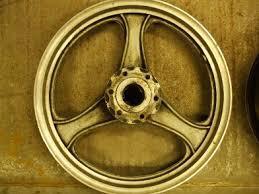
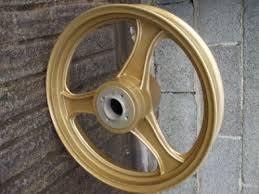
-
darn. any chance you'll be leaving those Dymags unattended any time soon Rene ?
I've been looking for the exact same 3-spoke 18" Dymags like the Knarf has for ages

Rare as hen's teeth, those wheels
-
 1
1
-
-
8 hours ago, captain chaos said:
that looks like a Kwak Zephyr swingarm and rear wheel.
zephyr 550 to be precise
What gives it away, are the wheels so recognizable ?
-
i'm collecting parts to build something like this :
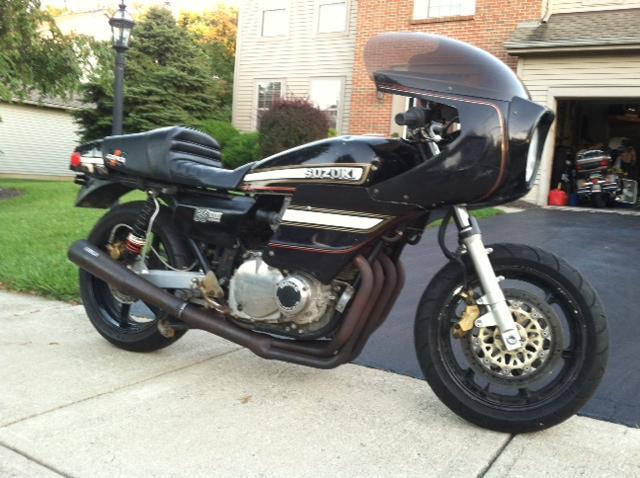
I will open a build thread for this one later on.
That 'Zero' seat is on my whishlist, very hard to find.
If it is a ZR 550 swingarm, i found a Fleabay ad that claims all models '91-'99 use the same 25 X 33 X 30 bearings as the GS1000,
so crossing my fingers this is an easy swap. Time saved will be put into polishing the swingarm.
-
 1
1
-
-
5 hours ago, Blubber said:
and one of the ugliest "limited editions" suzuki ever made in the background too

well spotted ! The 'Silver Suzi', i was wondering how collectible these are.
This one has been for sale for some time ...
-
hmmm.... still looks good, i'll make it work in the GS Thou ...
LOL so in 7 posts i managed to put in a Kwak pic twice ? Feel free to delete it

-
 1
1
-
-



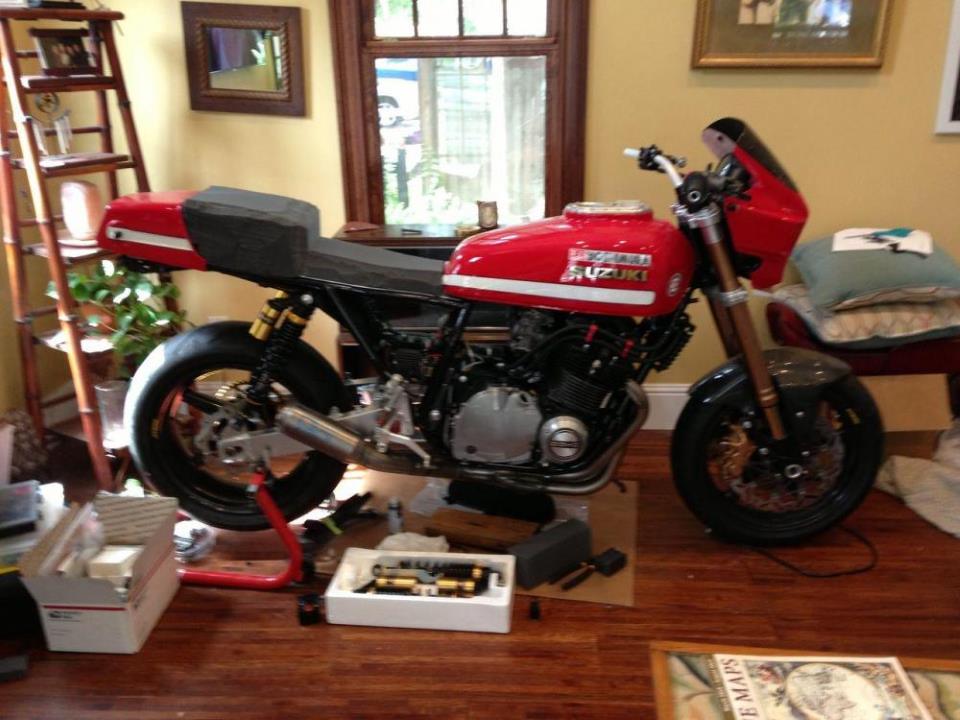
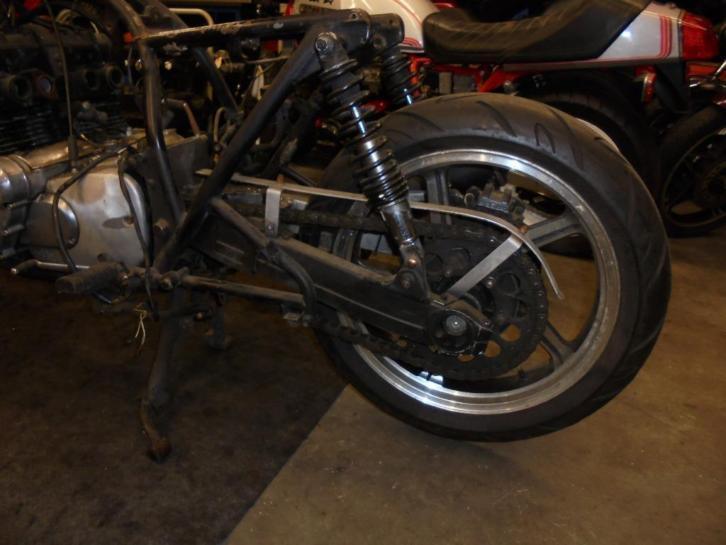
Up grade GS1000 Generator stator windings
in Air Cooled
Posted · Edited by Rijko
Just for giggles, measure the voltage on your coils, or on the (usually) green/yellow wire that activates the starter relais.
Or any other easily accessible 12V wire on the bike.
99,9% chance you'll be surprised by the voltage on the battery compared to what you measure there.
Hence my 'missing volts' remark.
Lower voltage means bad connections ; which in turn means higher than designed amperage and heat in those wires.
The transparent bullet connector cover turned brown is also a good indicator for a bad connection generating heat.